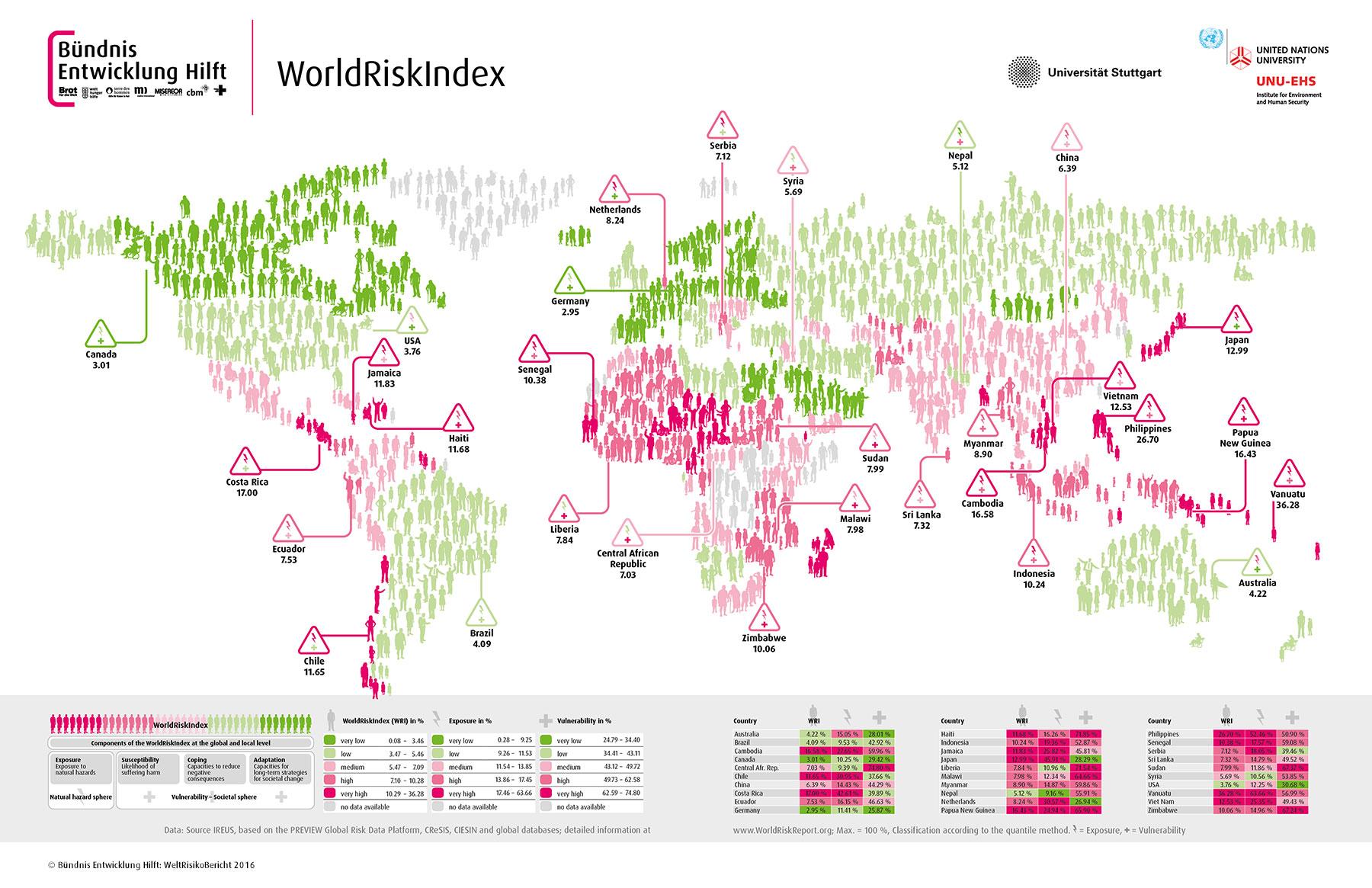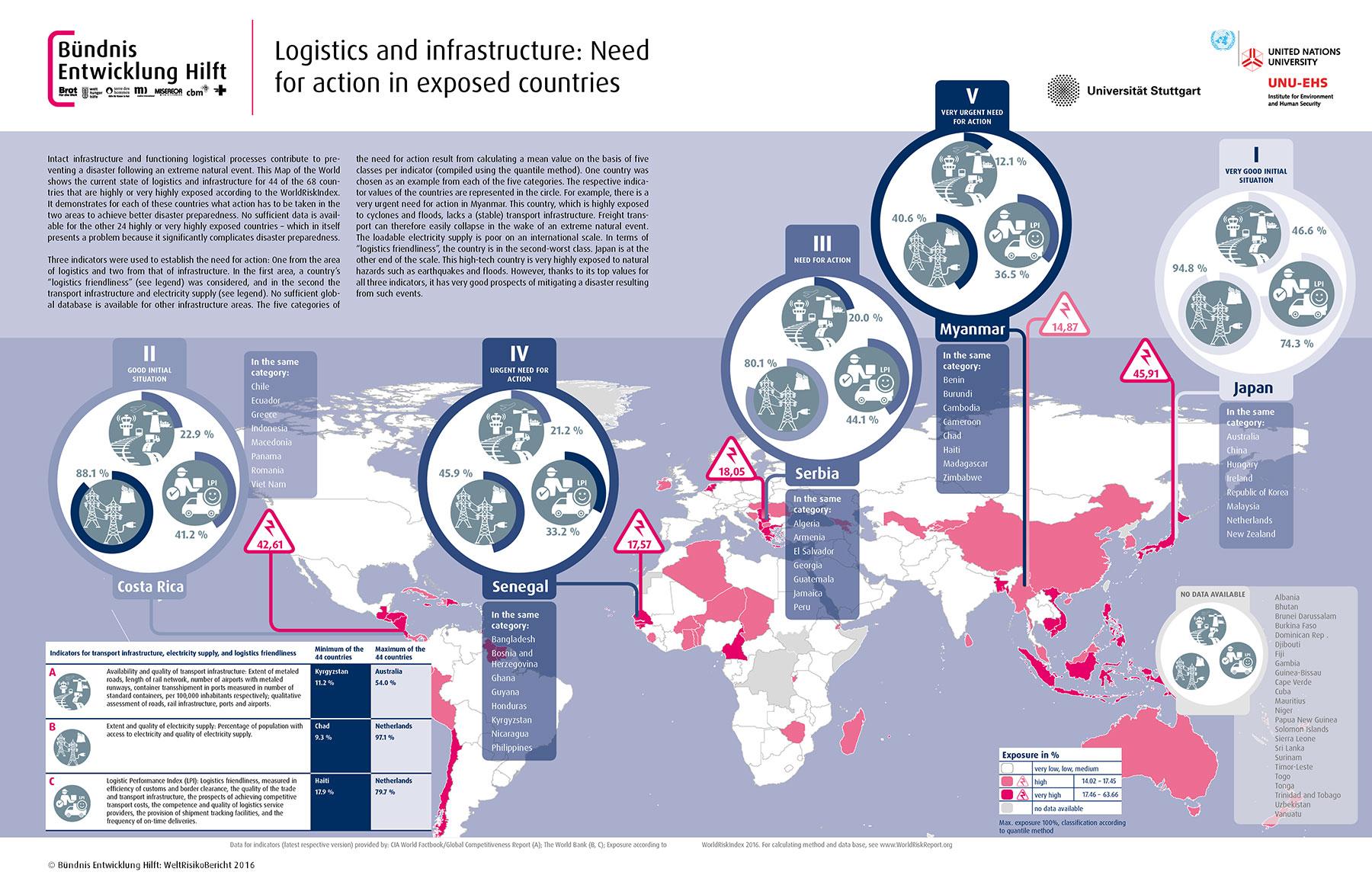PHL number 3 on countries most at risk of disasters
BARCELONA - Pacific islands, Southeast Asian nations and Central American states dominate the countries at highest risk of being hit by a disaster, researchers said on Thursday.
The World Risk Index 2016 ranks 171 countries according to how exposed and vulnerable they are to natural hazards, including earthquakes, floods and storms.
A disaster occurs when an extreme natural event overwhelms people's ability to protect themselves, the researchers said in a report.
Poor economic and social factors leave countries less able to keep their populations safe, they said, citing the Solomon Islands (ranked 6), Papua New Guinea (ranked 10) and Guinea-Bissau (ranked 15) which are also strongly exposed to hazards.
Factors that make people more vulnerable to disasters include poverty, slum housing, limited access to medical services and clean water, corruption and weak law enforcement.

Here are some facts from the index and accompanying World Risk Report, produced by the United Nations University, the University of Stuttgart and Bündnis Entwicklung Hilft, an alliance of German aid agencies:
- Vanuatu is the country with the highest disaster risk, followed by Tonga, Philippines, Guatemala and Bangladesh.
- The five countries with the lowest disaster risk are Qatar, Malta, Saudi Arabia, Barbados and Grenada.
- Thirteen of the 15 countries with the highest vulnerability are in Africa.
- Countries like Liberia (ranked 56), Zambia (ranked 66) and Central African Republic (ranked 71) are quite weakly exposed to natural hazards but are very vulnerable.
- Australia, ranked 121, shows how low vulnerability mitigates its relatively high exposure to drought, earthquakes and sea-level rise.
- But Japan is ranked 17 because of its very high exposure, mainly to earthquakes and floods, even though it has many measures in place to protect people.
- The global hot-spots for high disaster risk—Oceania, Southeast Asia, Central America and Africa's southern Sahel region—have not changed since the index was launched in 2011.
- Zimbabwe was one of the biggest movers in 2016, shifting from 18th to 13th highest-risk country, mainly due to a fall in the share of its people with access to clean water and improved sanitation.

The Philippine situation
In the classification of countries according to the current state of logistics and infrastructure, the Philippines is a category IV. In category IV countries, there is an "urgent need for action" to improve their transport infrastructure, electricity supply, and "logistics friendliness" (which is measured in efficiency of customs and border clearance, the quality of the trade and transport infrastructure, the prospects of achieving competitive transport costs, the competence and quality of logistics service providers, the provision of shipment tracking facilities, and the frequency of on-time deliveries).
The Philippines is in the same category as countries like Bangladesh, Senegal, Honduras and Nicaragua.
The Philippines also has a "high" (80.92%) lack of coping capacities, which the report defines as "measures and abilities that are immediately available to reduce harm and damages in the occurrence of an event." The country with the highest lack of coping capacities, Afghanistan, has a score of 92.85%. — Reuters



